C.D. Hersh's Blog, page 26
March 21, 2024
Friday Feature Dinner the Irish don’t cook
Presenting the traditional St. Patrick’s Day or anytime meal most North Americans will enjoy with a cold Harp Lager, Guinness Stout, Killian’s Irish Red Lager, or Smithwicks Ale. But here’s a newsflash, Boyo, except for the beer you’ll never find corned beef served anyway on the Old Sod. That’s right. Our Irish brethren look at us in amazement, but that’s never stopped us Yanks from creating traditions. So pour another wee dram and let’s get cooking.
Corned Beef
Cabbage
Carrots
Potatoes
Bakery Rye Bread
Horseradish Sauce
Mustard
Irish Beer and plenty of it
Corned Beef
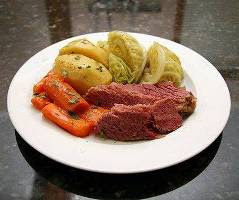
1 5lb. corned beef brisket*
2 med. onions, peeled and quartered
4 peppercorns
1 bay leaf
3 bottles of beer
water to cover
Preheat oven to 300 F°.
Place beef in a Dutch oven. Add remaining ingredients, including spice packet that comes with the beef.
Bring to a boil on stovetop. Place in oven and roast for 3 hours or until meat is fork tender.
*Don’t stint on the beef. It cooks down to approximately half. I learned this lesson the hard way.
Here’s a tip from my butcher Raoul. Always buy corned beef flat cut. It has less fat than the point. Therefore you get more meat for your money.
Vegetables
6 med. red potatoes, peeled and quartered
6 carrots, scraped and cut into 2″ pieces
1 celery stalk, cut into 2″ pieces
1 med. green cabbage, cut into 8 wedges
1 cup corned beef cooking liquid
water
You can prep all the veggies and store in a large container covered by cold water until you’re ready to cook them. Refrigerate so vegetables remain crisp.
Place veggies in a large pot. Stir in corned beef cooking liquid. Add water to cover vegetables by 2 inches. Cover pot. Set cooking temp at medium. Bring to a boil. Reduce heat so the pot doesn’t cook over, but maintain a soft boil. Cook about 30 minutes or until veggies are fork tender.
Horseradish Sauce

1 cup sour cream
2 tbsp. prepared horseradish
1 tsp. fresh chives, snipped short
Combine all ingredients in a medium bowl. Stir well.
Transfer to a serving dish, cover, and refrigerate until ready to serve.
Dea Ithe!
Sloane
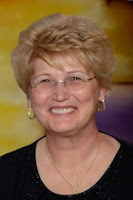 Sloane Taylor is an Award-Winning romance author with a passion that consumes her day and night. She is an avid cook and posts new recipes on her blog every Wednesday. The recipes are user friendly, meaning easy.
Sloane Taylor is an Award-Winning romance author with a passion that consumes her day and night. She is an avid cook and posts new recipes on her blog every Wednesday. The recipes are user friendly, meaning easy.
To learn more about Taylor go to her website. Stay in touch on Blogger, Twitter, and LinkedIn.
Taylor’s cookbooks, Hot Men Wear Aprons, Date Night Dinners, Date Night Dinners Italian Style, Sizzling Summer, and Recipes to Create Holidays Extraordinaire are released by Toque & Dagger Publishing and available on Amazon.
March 19, 2024
Wednesday Special Spotlight SIP & SCRIBBLE

Wine tasting and writing fiction may seem like two very different realms, but when you look closer, you’ll see that they share intriguing similarities. Both experiences involve sensory exploration and the art of storytelling.
 I recently began a journey into wine tasting and am now studying for my level 2 certification (yes, the homework rocks). How wine tasting appeals to me was similar to how I feel about writing. After some research, I discovered there was a connection. Just as a wine taster engages their senses to explore the intricacies of a wine, a fiction writer harnesses the power of sensory details to bring their story to life.
I recently began a journey into wine tasting and am now studying for my level 2 certification (yes, the homework rocks). How wine tasting appeals to me was similar to how I feel about writing. After some research, I discovered there was a connection. Just as a wine taster engages their senses to explore the intricacies of a wine, a fiction writer harnesses the power of sensory details to bring their story to life.
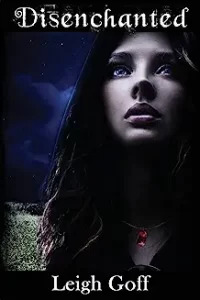 A highly skilled winemaker tends to the grapes and the winemaking process to produce a wine like a Napa Cabernet that boasts flavors of ripe blackberries, velvety dark chocolate with subtle hints of cedar, culminating in a full-bodied magical experience on the palate. When I craft a story, I construct compelling plots, drawing on my sensory experiences to enhance them and then refine the work through editing and revision. In my first novel, Disenchanted, the story I created was filled with sensory details. I wanted to immerse the reader in the magic of Sophie’s world, her star-crossed romance, and the haunting history of Old Wethersfield.
A highly skilled winemaker tends to the grapes and the winemaking process to produce a wine like a Napa Cabernet that boasts flavors of ripe blackberries, velvety dark chocolate with subtle hints of cedar, culminating in a full-bodied magical experience on the palate. When I craft a story, I construct compelling plots, drawing on my sensory experiences to enhance them and then refine the work through editing and revision. In my first novel, Disenchanted, the story I created was filled with sensory details. I wanted to immerse the reader in the magic of Sophie’s world, her star-crossed romance, and the haunting history of Old Wethersfield.
Some writers through the centuries, such as Jane Austen, were known to imbibe on too much wine. Research from the University of Graz shows that drinking wine enhances creative thinking for writers. Of course, it does! Now winemakers are harnessing the art of storytelling to enhance their connection with consumers. Using a new phone app called Winerytale, the user can read the story about a wine of their choice and learn about the winemakers.
While wine tasting and writing fiction may seem unrelated, the parallels are undeniable. Both pursuits involve sensory exploration, layered complexity, subjective interpretation, storytelling, and a blend of artistry and craftsmanship. The next time you savor a glass of wine or dive into a captivating novel, take a moment to appreciate the shared essence of these two worlds, where sensory delights and imaginative tales intertwine.
Cheers!
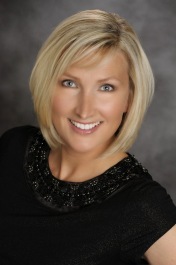 Leigh Goff writes young adult fiction. She is a graduate from the University of Maryland and a member of the Society of Children’s Book Writers & Illustrators (SCBWI).
Leigh Goff writes young adult fiction. She is a graduate from the University of Maryland and a member of the Society of Children’s Book Writers & Illustrators (SCBWI).
Born and raised on the East Coast, she now lives in Maryland where she and her husband enjoy the area’s great history and culture.
Learn more about Leigh Goff on her website and blog. Stay connected on Facebook, Instagram, Pinterest, and Goodreads.
March 18, 2024
Tell Again Tuesday Editor Reading
Flog a Pro: Would You Turn the First Page of this Bestseller?By Ray Rhamey
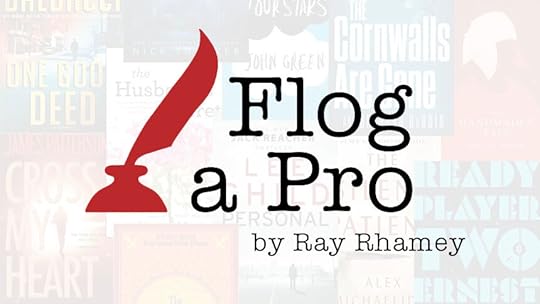
Trained by reading hundreds of submissions, editors and agents often make their read/not-read decision on the first page. In a customarily formatted book manuscript with chapters starting about 1/3 of the way down the page (double-spaced, 1-inch margins, 12-point type), there are 16 or 17 lines on the first page.
Here’s the question:Would you pay good money to read the rest of the chapter? With 50 chapters in a book that costs $15, each chapter would be “worth” 30 cents.
So, before you read the excerpt . . .
For the rest of the blog go to:March 14, 2024
Friday Feature On Being A Biohazard

When I got Covid and subsequently broke my leg a few years back, I was labeled a biohazard.
Covid hit me hard in 2021. Hallucinations haunted me, especially the one where I was being attacked by words, which, à la Serena Williams, I batted away. But the more I repelled those words, the faster they came at me. The experience was akin to being inside a video game.
Later, I passed out and awoke with a severely broken leg, one that had to be surgically repaired and which kept me hobbling around for about eight months. I mention this because when I was hospitalized the fact that I still had Covid was problematic. The sign outside my room said Biohazard in big letters, underneath of which was my name, as well as those of the other Covid patients on the floor.
As a former sports official, an avocation I practiced for forty years, I’d been called a lot of unpleasant things, still Biohazard was a something new and rather sinister sounding. The medical staff coming in and out of my room in coveralls, hoods, and goggles lent an ominous tone, so as you can imagine I was happy when they released me to recover from the virus and wait for surgery at home.
Recently, I dealt with a similar issue. I have what is disturbingly called a degenerative spine, the result of too many falls and hits and lots of repetitive motion. So, my surgeon sent me off to the imaging people, where a nice lady stuck a needle in my arm and deposited a bit of radioactive material into my bloodstream. If the idea is making you squeamish, note that I was a bit queasy about the idea as well.
“Will I glow?” I asked the technician.
She smiled. “Maybe some sparkles.”
I waited several hours for the radioactive stuff to do its job, then I had to stay completely still for about a half an hour. The scanning machines hummed quietly, as they rolled over and around me. It wasn’t unpleasant, though my nose itched and I wasn’t allowed to scratch it. Still, in the grand scheme it was pretty painless.
When it was over, I asked if I could see the results and what I saw was strangely beautiful. My spine was lit up in purple and turquoise and a bright yellow patch burst from my cervical spine.
“That’s the bad part,” I said pointing at the stary spot.
“I can see that,” she said.
The scans will go to the neurosurgeon, who will decipher all that light and decided how to fix me. I tried to understand what he might see, but like many body scans there was a Rorschach-test quality to the pictures that I couldn’t decode.
I thanked the woman for her help, and before I left she said, “Don’t hold any babies for a few hours. And don’t sit next to any pregnant women.”
I squinted.
“And you probably shouldn’t go to the airport. TSA might stop you.”
“I’m leaking radiation?”
She smiled.
Biohazard indeed.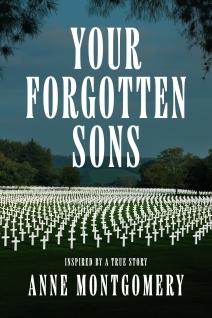
Your Forgotten Sons
Inspired by a true story
Bud Richardville is inducted into the Army as the United States prepares for the invasion of Europe in 1943. A chance comment has Bud assigned to the Graves Registration Service where his unit is tasked with locating, identifying, and burying the dead. Bud ships out, leaving behind his new wife, Lorraine, a mysterious woman who has stolen his heart but whose secretive nature and shadowy past leave many unanswered questions. When Bud and his men hit the beach at Normandy, they are immediately thrust into the horrors of what working in a graves unit entails. Bud is beaten down by the gruesome demands of his job and losses in his personal life, but then he meets Eva, an optimistic soul who despite the war can see a positive future. Will Eva’s love be enough to save him?
Pre-Order your copy todayAnne Montgomery’s novels can be found wherever books are sold.

Anne Montgomery has worked as a television sportscaster, newspaper and magazine writer, teacher, amateur baseball umpire, and high school football referee. She worked at WRBL‐TV in Columbus, Georgia, WROC‐TV in Rochester, New York, KTSP‐TV in Phoenix, Arizona, ESPN in Bristol, Connecticut, where she anchored the Emmy and ACE award‐winning SportsCenter, and ASPN-TV as the studio host for the NBA’s Phoenix Suns. Montgomery has been a freelance and staff writer for six publications, writing sports, features, movie reviews, and archeological pieces.
When she can, Anne indulges in her passions: rock collecting, scuba diving, football refereeing, and playing her guitar.
Learn more about Anne Montgomery on her website and Wikipedia. Stay connected on Facebook, Linkedin, and Twitter.
March 12, 2024
Wednesday Special Spotlight NEW RELEASE for STELLA MAY
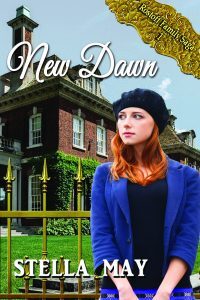 Love wasn’t part of their agreement.
Neither was being caught in a brutal web of lies.
Love wasn’t part of their agreement.
Neither was being caught in a brutal web of lies.
International playboy and owner of a jewelry empire that spreads across three continents, Dmitry Rostoff holds a memory close to this heart that not even his best friend Vlad Albrecht knows. When Dmitry learns the Russian ballerina, he had a passionate affair with died in childbirth, bitterness and hate overrule all other emotions.
Taking the baby out of Russia is an impossible snarl of red tape, but Dmitry gets his way, even if he leaves a trail of chaos in his wake.
Natasha Sokolova planned to turn over the baby to Dmitry then walk away. Instead, she is on a plane to San Francisco with the baby and a cold, emotionless man who makes her heart pound with scorching attraction.
The family matriarch and evil to her core Elizabeth Rostoff plots to gain control of the baby, no matter what it costs or who it hurts, and will do anything to make that happen. She blackmails Marie Dubois, the manager of their elite Paris store, to seduce Dmitry. But Marie reneges on the deal when former Special Forces officer Vlad Albrecht storms into her life.
Once in America, Natasha finds herself entangled in a sticky web of lies created by the brutally calculating family matriarch. A web that forces Natasha to make a heartbreaking deal with the devil to protect the children—and man—she’s come to love.
AMAZON BUY LINK and OTHER SUPPLIERS Stella May is the penname for Marina Sardarova who has a fascinating history you should read on her website.
Stella May is the penname for Marina Sardarova who has a fascinating history you should read on her website.
Stella writes fantasy romance as well as time travel romance. She is the author of ‘Till Time Do Us Part, Book 1 in her Upon a Time series, and the stand-alone book Rhapsody in Dreams. Love and family are two cornerstones of her stories and life. Stella’s books are available in e-book and paperback through all major vendors.
When not writing, Stella enjoys classical music, reading, and long walks along the ocean with her husband. She lives in Jacksonville, Florida with her husband Leo of 25 years and their son George. They are her two best friends and are all partners in their family business.
Follow Stella on her website and blog. Stay connected on Facebook, Twitter, and Pinterest.
March 11, 2024
Tell Again Tuesday Travel in 19th Century
Travel in Jane Austen’s Time IIBy Julie Klassen
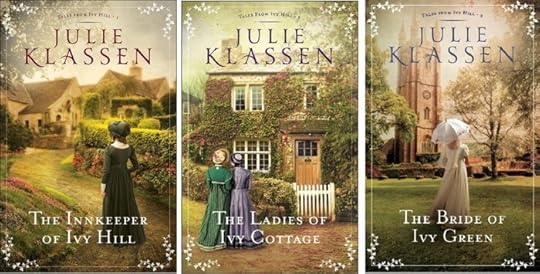
This past Saturday, I spoke (via Zoom) to the New York Metropolitan chapter of the Jane Austen Society of North America. The topic was “The Pleasures and Perils of Travel in Jane Austen’s time.” I have not spoken on this topic in several years, so it was a good refresher to revisit all that research again.
I originally researched travel and coaching inns to write my series, Tales From Ivy Hill and especially Book One, The Innkeeper of Ivy Hill, which is set primarily in a coaching inn. After all, in almost all of my books, travel plays a part in one way or another.
I learned a few new things in reviewing and revising the talk, that I thought I would share with you today: . . .
For the rest of the blog go to:March 7, 2024
Friday Feature New Book
Exciting News: Revealing My Next Book – The Car Share#romance #romcom #commuterlife
March 5, 2024
Wednesday Special Spotlight Aging Gracefully
I have worked out most of my life. I started ice skating at five. I skied and swam. When I was 24, I started officiating sports and called football, baseball, ice hockey, soccer, and basketball games, an avocation I practiced for 40 years. When I was 30, I got my first health club membership and I have had one ever since.
 So, I’m a long-time gym rat. I’ve lifted weights, utilized aerobics equipment, and practiced yoga, but I’m primarily a lap swimmer. I mention this because recently I turned the golden corner for those of us who spend time at the gym. The reason? Silver Sneakers.
So, I’m a long-time gym rat. I’ve lifted weights, utilized aerobics equipment, and practiced yoga, but I’m primarily a lap swimmer. I mention this because recently I turned the golden corner for those of us who spend time at the gym. The reason? Silver Sneakers.
For the uninformed, Silver Sneakers is a health and fitness program that provides gym access and fitness classes for people 65 and older. It’s covered by some Medicare plans. That means I no longer have to shell out those monthly fees to the health club.
The idea, of course, is to keep old people moving so they’re less likely to succumb to problems like heart disease, broken bones from falls, high-blood pressure, diabetes, cancer, and obesity. If people get exercise, chances are they won’t become ill or injured, which keeps those Medicare costs down.
I’ve been swimming laps regularly for 35 years, so I am pretty comfortable working out.
I was feeling pretty smug the day I walked into the club and asked to be moved to the Silver Sneakers rolls. I had just finished swimming a thousand meters – sadly, I used to swim two thousand, but as I’ve already intimated, I’m old.
“Of course! I’d be happy to help,” a tall, twenty-something smiled down at me. “Sit right here. Just show me your ID and your membership card, Ms. Montgomery.”
I noted he was very solicitous.
After putting the important bits of information into the computer and handing me my new key fob, he placed both elbows on the desk. “Now, we can provide you with a free one-hour counseling session.”
“What for?”
He tilted his head. “To help you learn how to work out.”
I squinted. Did I look like I needed help finding my way around the gym? Did I look like I spent my days on the couch eating Ding Dongs? Did I look like I didn’t know a free weight from a foam roller?
Then, I had an I-glimpsed-myself-in-a-store-window moment. I know you’ve done it. You walk by a reflective surface and the person you see staring back is not the one you always imagined. I was forced to consider how this nice young man saw me. He smiled sweetly. I stared back, realizing I might now appear to be a little old lady.
I said I’d think about the offer. It certainly wouldn’t hurt to see if there’s anything I’ve been missing. I thanked him and left. Though I stared at the floor whenever I got close to a window.
This is my latest release. It’s Native American Literature and U.S. Historical Fiction. Picking a genre definitely is not easy.
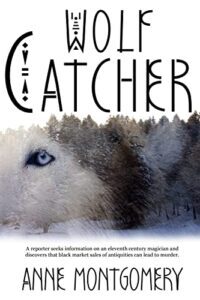 The past and present collide when a tenacious reporter seeks information on an eleventh century magician…and uncovers more than she bargained for.
The past and present collide when a tenacious reporter seeks information on an eleventh century magician…and uncovers more than she bargained for.
In 1939, archaeologists uncovered a tomb at the Northern Arizona site called Ridge Ruin. The man, bedecked in fine turquoise jewelry and intricate beadwork, was surrounded by wooden swords with handles carved into animal hooves and human hands. The Hopi workers stepped back from the grave, knowing what the Moochiwimi sticks meant. This man, buried nine-hundred years earlier, was a magician.
Former television journalist Kate Butler hangs on to her investigative reporting career by writing freelance magazine articles. Her research on The Magician shows he bore some European facial characteristics and physical qualities that made him different from the people who buried him. Her quest to discover The Magician’s origin carries her back to a time when the high desert world was shattered by the birth of a volcano and into the present-day dangers of archaeological looting where black market sales of antiquities can lead to murder.
AMAZON BUY LINK
Anne Montgomery has worked as a television sportscaster, newspaper and magazine writer, teacher, amateur baseball umpire, and high school football referee. She worked at WRBL‐TV in Columbus, Georgia, WROC‐TV in Rochester, New York, KTSP‐TV in Phoenix, Arizona, ESPN in Bristol, Connecticut, where she anchored the Emmy and ACE award‐winning SportsCenter, and ASPN-TV as the studio host for the NBA’s Phoenix Suns. Montgomery has been a freelance and staff writer for six publications, writing sports, features, movie reviews, and archeological pieces.
When she can, Anne indulges in her passions: rock collecting, scuba diving, football refereeing, and playing her guitar.
Learn more about Anne Montgomery on her website and Wikipedia. Stay connected on Facebook, Linkedin, and Twitter.
March 4, 2024
Tell Again Tuesday Romance Friendships
The Role of Friendships in Romance NovelsBy Lucy Mitchell

In the glorious world of romance novels, the spotlight often shines brightly on the passionate and tumultuous love affair between the main characters. I believe there is an often overlooked but integral element that adds depth, richness, and authenticity to the narrative: the friends of your main characters.
Friendships in romance novels serve as the unsung heroes, quietly weaving themselves into the fabric of the story, yet playing a pivotal role in shaping the characters and their relationships.
Here are some of the things they provide: . . .
For the rest of the blog go to:February 29, 2024
Friday Feature Cover Reveal For Stella May
Romance author Stella May steps away from her time travel books to bring us a new series, The Rostoff Saga. Here’s the cover and intro for New Dawn, Book 1 of exciting four book series, that releases March 8. Here’s hoping there will be more to follow.
 Love wasn’t part of their agreement.
Neither was being caught in a brutal web of lies.
Love wasn’t part of their agreement.
Neither was being caught in a brutal web of lies.
International playboy and owner of a jewelry empire that spreads across three continents, Dmitry Rostoff holds a memory close to this heart that not even his best friend Vlad Albrecht knows. When Dmitry learns the Russian ballerina, he had a passionate affair with died in childbirth, bitterness and hate overrule all other emotions.
Taking the baby out of Russia is an impossible snarl of red tape, but Dmitry gets his way, even if he leaves a trail of chaos in his wake.
Natasha Sokolova planned to turn over the baby to Dmitry then walk away. Instead, she is on a plane to San Francisco with the baby and a cold, emotionless man who makes her heart pound with scorching attraction.
The family matriarch and evil to her core Elizabeth Rostoff plots to gain control of the baby, no matter what it costs or who it hurts, and will do anything to make that happen. She blackmails Marie Dubois, the manager of their elite Paris store, to seduce Dmitry. But Marie reneges on the deal when former Special Forces officer Vlad Albrecht storms into her life.
Once in America, Natasha finds herself entangled in a sticky web of lies created by the brutally calculating family matriarch. A web that forces Natasha to make a heartbreaking deal with the devil to protect the children—and man—she’s come to love.
 Stella May is the penname for Marina Sardarova who has a fascinating history you should read on her website.
Stella May is the penname for Marina Sardarova who has a fascinating history you should read on her website.
Stella writes fantasy romance as well as time travel romance. She is the author of ‘Till Time Do Us Part, Book 1 in her Upon a Time series, and the stand-alone book Rhapsody in Dreams. Love and family are two cornerstones of her stories and life. Stella’s books are available in e-book and paperback through all major vendors.
When not writing, Stella enjoys classical music, reading, and long walks along the ocean with her husband. She lives in Jacksonville, Florida with her husband Leo of 25 years and their son George. They are her two best friends and are all partners in their family business.Follow Stella on her website and blog. Stay connected on Facebook, Twitter, and Pinterest.




